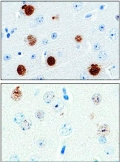FROM JACC AND CIRCULATION
Universal definitions and data standards have now been established for clinical research involving cardiovascular endpoints, according to a report published online Dec. 29 in both the Journal of the American College of Cardiology and Circulation.
The American College of Cardiology/American Heart Association Task Force on Clinical Data Standards, in collaboration with the Food and Drug Administration and the Standardized Data Collection for Cardiovascular Trials Initiative (SCTI), described the standards as “a first step in developing a universal language for clinical trials and other types of health-related research.” The aim is to make patient data regarding CV endpoints as consistent as possible across electronic health records, clinical trial databases, registries, drug/device surveillance programs, and other health-related research, to facilitate information sharing, said Dr. Karen A. Hicks, chair of the task force’s writing committee to develop cardiovascular endpoints data standards, and her associates.
The report defines CV endpoints such as cardiovascular cause of death (as opposed to noncardiovascular or undetermined causes of death), MI, hospitalization for unstable angina, TIA, stroke, heart failure event, percutaneous coronary intervention, peripheral vascular intervention, and stent thrombosis. For example, the report notes that the outcome “hospitalization for unstable angina” is frequently assessed in research evaluating the safety of CV therapies, but by necessity involves subjective assessment of the most likely etiology of the symptoms that trigger hospitalization. To clarify that this outcome is truly due to cardiovascular ischemia, the definition must now include the presence of ECG abnormalities, such as deviations in the ST segment, the morphology of ST-segment changes (horizontal or downsloping vs. upsloping), and the magnitude of the deviation.
Similarly, the report’s definition of TIA now emphasizes the patient’s clinical presentation rather than the anatomic location of the lesion, because the availability of imaging modalities varies so much across medical centers. And, because heart failure can result from so many different etiologies, the key element in the definition of a heart failure event now is “the need for a resource-intensive response to failure of the primary therapeutic management strategy.”
“What makes this work unique is that it reviews and refines the terms as developed by the SCTI explicitly for use in reporting clinical trial results and in regulatory submissions, and it delineates where these concepts could or should not be used as the foundational vocabulary in routine clinical care,” Dr. Hicks, a cardiologist at the FDA, and her associates stated.
The SCTI is a working group comprised of experts from academia, professional societies, the FDA, and manufacturers of pharmaceuticals and CV devices. The ACC/AHA task force included 16 people with expertise in internal medicine, cardiovascular medicine, neurology, clinical research, epidemiology, invasive and interventional therapies, outcomes assessment, medical informatics, health information management, and healthcare services research and delivery.
The full report is available from the American College of Cardiology at www.acc.org and from the American Heart Association at www.myamericanheart.org .



